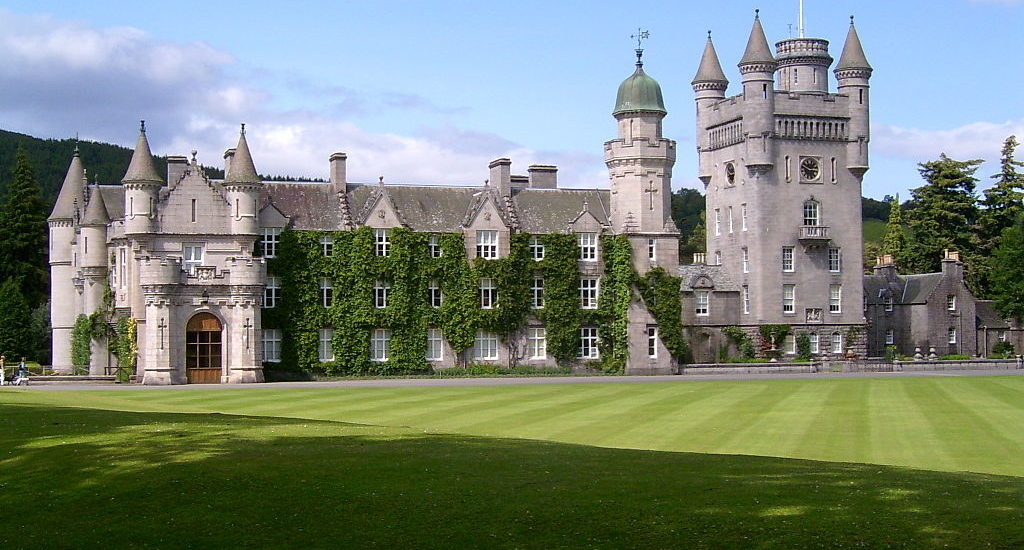- May 31, 2017
- Posted by: David Marshall
- Category: Business, Innovation

The further backward you can look, the farther forward you are likely to see.
I’ve always been a big fan of Winston Churchill, and as I was growing up, I adopted several of his quotes as philosophies to live by. This month, I’ll discuss four quotes that have guided me over my professional career.
Being a fan of Churchill also means I’m a fan of history. All my life, I’ve paid attention to the politics of where I’m from, and where I’ve lived. I’m originally from England, but I’ve lived and worked in South Africa, Canada, and the United States.
So I watch the history of what has happened around me, at work and in my countries of residence, to see what I can learn from the past, and how to avoid making those same mistakes.
On the other hand, I know people who are so wedded to the past that they fear change and won’t do anything differently.
There’s an old legend that in one of the Queen’s other palaces (not Buckingham Palace where the royal family lives), they had a guard stationed in the center of the courtyard round the clock. No one was sure what they were supposed to be guarding, but for years, they made sure someone was standing inside this enclosed courtyard at all times.
Finally, someone asked, “why do we have a guard stationed here? What’s he supposed to be guarding?” They did a little investigating and found that, many years before, when the royal family was visiting this other palace, they were going to have an outdoor banquet one evening. So a guard was stationed to watch over the food and place settings.
The next day, someone asked where the food-guarding guard should be stationed, since the banquet was over. Without thinking about the problem, the captain, in essence, said, “I don’t know. Go back to the same place as yesterday, and we’ll figure something out later.”
Of course, they never figured it out, and no one ever thought to point out that there was no longer anything there to guard. Instead, they assigned a guard to stand in the middle of the courtyard, watching over a banquet that had ended years before. Once they realized the history of their tradition, they stopped.
It’s one thing to understand what you’ve done in the past, but it’s important to ask why you’re still doing it. Because if you can’t answer that question, you’re going to keep repeating that same behavior that’s likely causing you trouble today.
(This story also illustrates the problem of assuming those in charge know everything and those underneath them know nothing.)
This was the kind of thinking I brought to Robroy when I first started as the President and COO. Because I was an outsider, I brought an outsider’s perspective to the job. I wasn’t satisfied with doing the things we had done before. I wanted to know why we did them before we continued them. And if the why wasn’t good enough, or it no longer suited our purposes, we stopped doing it and built a new platform or process on which we could move forward.
One example was in the way the factory floor was laid out. We had materials that would be transported to one end of the floor, run through a machine, and then sent back to the other end of the floor for another step in our process, before being taken to a third machine in the middle. We damaged a lot of products during all those transitions, and even seeing injuries on the floor, and that was costing us a lot of money.
I finally asked why the machines were laid out in this configuration. Clearly, “because we’ve always done it this way” wasn’t going to cut it any longer. When I asked the right people, I learned that the floor had once been properly laid out so there was a nice flow to our manufacturing process. But as we added new machines to the operation, we put them wherever there was space, without shifting everything around.
So we rearanged all the machines so there was a U-shaped flow to our entire manufacturing process. We started at one end, the product flowed to the other, rounded the bend, and came back along the other side of the factory. We also added some new technology so we didn’t have to move heavier products by hand, which reduced injuries and damage.
Sure, there was some resistance to the plan at first, because there always is. People don’t like to change those things that they know; they feel comfortable and safe, even if there’s a little pain involved in keeping it that way.
But I kept thinking about Churchill’s other famous quote about learning from our past: “If we open a quarrel between past and present, we shall find that we have lost the future.”
I’ve always tried to learn from the past by learning from other people’s mistakes. As we’ve all heard, if you don’t learn from history, you are bound to repeat it. So I learned from what my predecessors had done, but also what my peer group — executives in other companies — were doing and how they were doing it. And if something didn’t work for them, I made damn sure I didn’t do it myself. That’s served me pretty well over the years.
I’ve been a manufacturing executive, as well as a sales and marketing professional, for a few decades. Now I help companies turn around their own business. If you would like more information, please visit my website and connect with me on Twitter or LinkedIn.
Photo credit: Stuart Yeates (Wikimedia Commons, Creative Commons 2.0)

